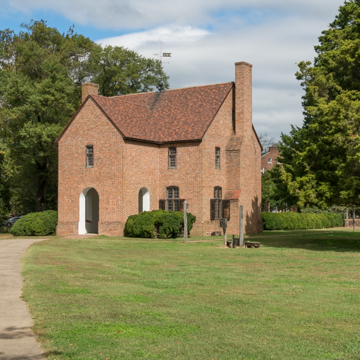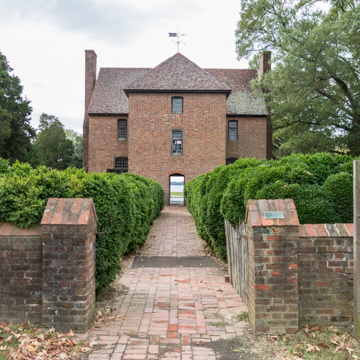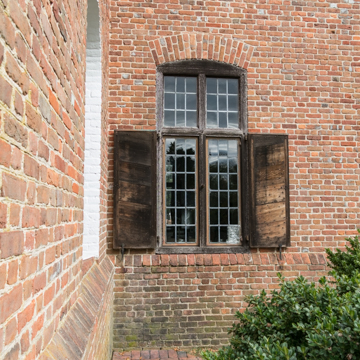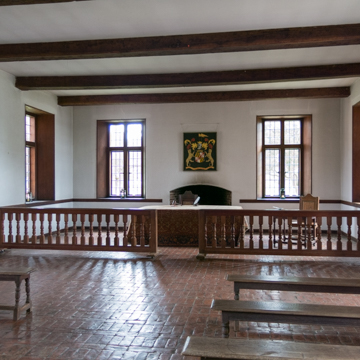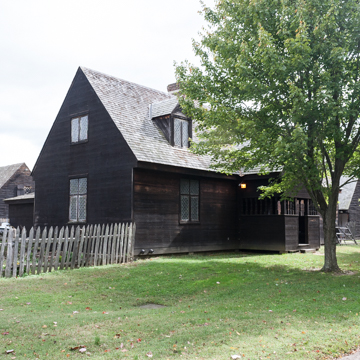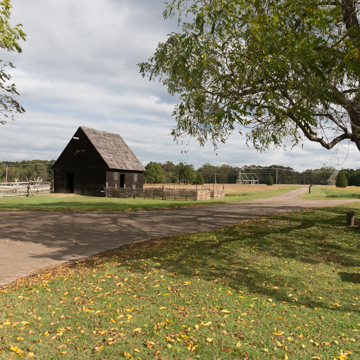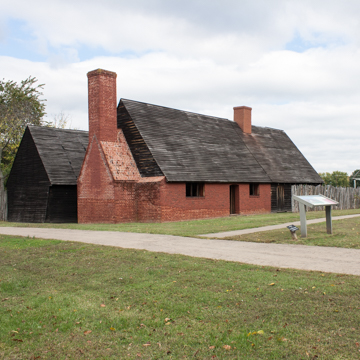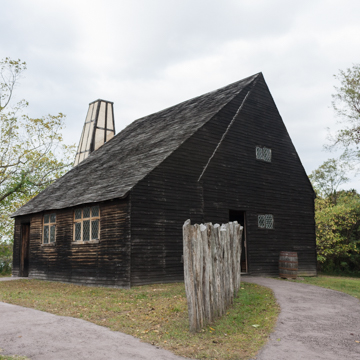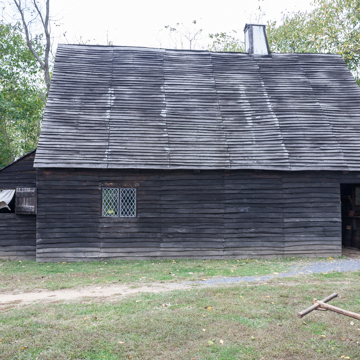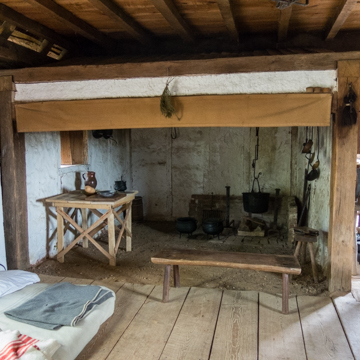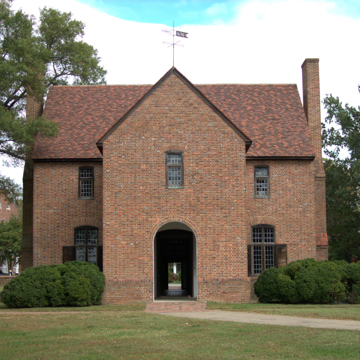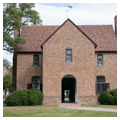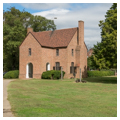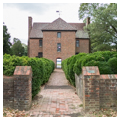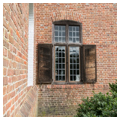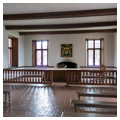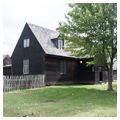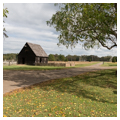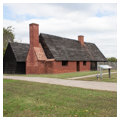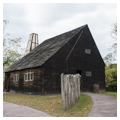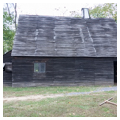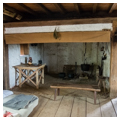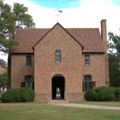This building is a reconstruction of the 1676 Jacobean State House that stood in St. Mary’s City, the provincial capital of Maryland. Founded in 1634 as the fourth permanent English settlement in North America, St. Mary’s City was no longer extant by the nineteenth century. Based upon archaeological investigations led by Herbert R. Shelton of Colonial Williamsburg, the reconstruction (built adjacent to the original site) represents an early Maryland endeavor in historic preservation and the study of colonial life. It replicates an English postmedieval cruciform building consisting of a large first-floor assembly hall adjoining an open entrance porch and chamber above, with a matching stair tower to the rear, accessing a second-story council chamber and anteroom. The building is constructed of Flemish bond brick salvaged from two then-recently burned colonial houses, Bushwood Manor and Cartegena.
In 1966, the Historic St. Mary’s City Commission was formed to preserve the archaeological evidence of the former capital and reconstruct and interpret other select buildings. Since 1969 Historic St. Mary’s City and its reconstructed village has operated as a living history museum and internationally recognized archaeological research center, partnering with the adjacent St. Mary’s College and other educational institutions. St. Mary’s constitutes the nation’s only remaining major seventeenth-century townsite left undisturbed, containing foundations of approximately sixty seventeenth-century structures laid out in a Baroque-influenced town plan. Reconstructed earth-fast buildings include the c. 1665 Land Office, later Dutch Catholic settler Garrett Van Sweringen’s inn; the Godiah Spray Tobacco Plantation house, barn, and kitchen garden; and Farthing’s Ordinary.
References
Bourne, Michael O., “Replica of the 1676 State House,” St. Mary’s County, Maryland. National Register of Historic Places Inventory–Nomination Form, 1968. National Park Service, U.S. Department of the Interior, Washington, D.C.
Carson, Lois Green. “‘The Metropolis of Maryland’: A Comment on Town Development Along the Tobacco Coast.” Maryland Historical Magazine 69 (Summer 1974): 124-145.
Foreman, Henry Chandlee. “The Maryland Cross Dwelling.” Maryland Historical Magazine 43, no. 1 (March 1948): 22-27.
Knott, Laura, “Reconstructed State House of 1676,” St. Mary’s County, Maryland. Historic American Landscapes Survey, National Park Service, U.S. Department of the Interior, 2013. Prints and Photographs Division, Library of Congress (HALS No. MD-24).








